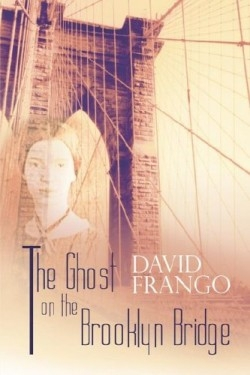
The Ghost on the Brooklyn Bridge
(Epona's Night Journey)
If I could start one heart from breaking
If I could ease one life the aching
Or cool one pain
Or help one fainting robin
Unto his nest again
I shall not live in vain.
Emily Dickinson’s life-affirming and eloquent reflective poem is the foundation for The Ghost on the Brooklyn Bridge a droll story about two heroines on a mission to save two suicidal gentlemen from their nihilistic views of life.
Sue and Debby rich and ready to party on Halloween night — dressed as men — encounter Robert a depressed college student blowing his multi-million dollar inheritance before using the services of a men-only Suicide Club. In their zeal to save him from himself Sue and Debby join his Club only to find it run by materialistic ex-hippies from the drug culture of the 60s and 70s. They also encounter several other young “suicider” types among them a mathematical genius from Princeton whom Sue and Debby also wish to rescue. First however they must survive two random dealings of cards in which the “killer” and the “suicide killee” are chosen. Sue and Debby having fallen in love with Robert and the genius respectively eventually manage to save the men with the help of Dickinson’s ghost.
The story’s conceptual basis is a good one and had certain problems been corrected this book could have become a classic in the fight against drug and alcohol abuse. Unfortunately author David Frango’s characters are two-dimensional figures which puts a barrier between the reader and the drama. The inclusion of huge sections of expository detailing how nihilism leads to lives void of meaning and Frango’s use of esoteric aliases for real rock stars activists and media personalities (i.e. The Grateful Dead Janice Joplin Jimi Hendrix Jane Fonda Howard Stern) may turn off the generation this book is meant to save. Other key references that would have been excellent research tools for Frango’s audience like the movie The Dead Poet’s Society and the 60’s mantra of “If it feels good do it!” were also unnecessarily altered.
Overall this book has an excellent message. Its ultimate test is whether or not young adults will be turned off by the intellectualism and Frango’s baffling coding of people — people readers should know more about if they themselves are to understand what paths to avoid in the real world.
Disclosure: This article is not an endorsement, but a review. The publisher of this book provided free copies of the book and paid a small fee to have their book reviewed by a professional reviewer. Foreword Reviews and Clarion Reviews make no guarantee that the publisher will receive a positive review. Foreword Magazine, Inc. is disclosing this in accordance with the Federal Trade Commission’s 16 CFR, Part 255.
